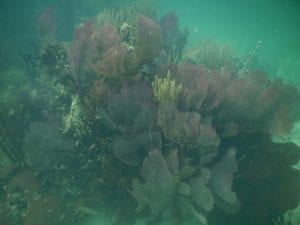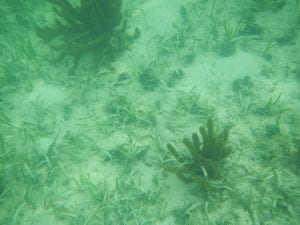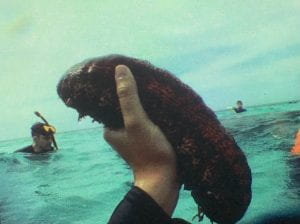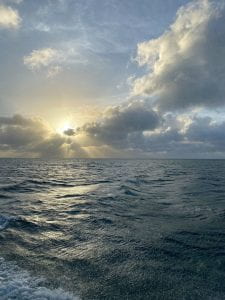Today we started learning how to take measurements and collect data underwater. We made quadrants yesterday (pvc squares with string tied on to make a grid), that we will be using this week to answer questions about the reef that we will come up with! Today, as a large group, we tried to see if the density of the Penecillus sp. algae changed with distance from the shore. We ended up having a completely wrong hypothesis (that it would be denser near the shore), but at least we got a good handle on using the quadrants. It is harder than you would think to be holding onto a camera, quadrant, and a clip board underwater! There weren’t any soft corals in the sea grass area, as they tend to prefer live coral patches and reefs.
While taking our measurements, we found a sea star! Holding it felt very cool, as it started to grip your hand with suction cup like appendages. I got a great picture of my snorkel buddy Michiel holding it!
This afternoon, we got to visit a beach with countless coral skeletons that had been turned into more lasting rock, preserving them immaculately. This was a super cool way to see what the inside of corals look like, especially because when we see them in the water they are often obscured by either live coral tissue or algal overgrowth. I tried to identify a few species using guide books, but didn’t have too much luck. Now that I know what they look like though (thanks to Dr. Correa and everyone else with better identification skills), I think they will be much easier to recognize on the reef!
At the coral graveyard, I also saw a dead dried out soft coral, a common sea fan. This wasn’t calcified like the hard coral skeletons however, it was just a common sea fan missing its polyps!
– Ava





